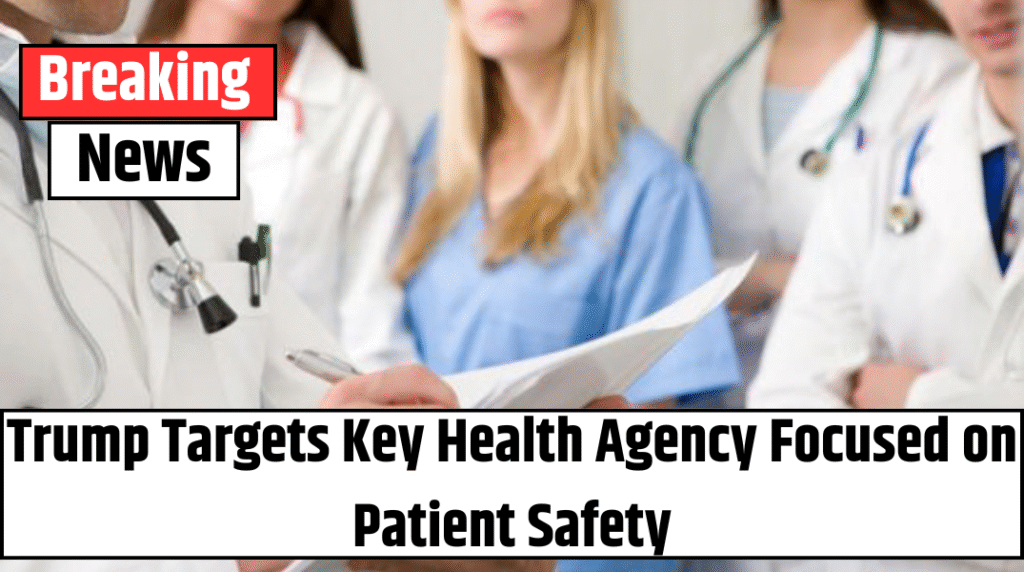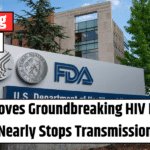WASHINGTON, D.C. — June 2025 — In a sweeping and controversial move, the Trump administration has gutted one of the nation’s most pivotal health research bodies, the Agency for Healthcare Research and Quality (AHRQ)—a decision already rippling across the health care landscape with potentially long-lasting consequences for patient safety and public health.
On April 1, HHS Secretary Robert F. Kennedy Jr. announced the agency’s effective shutdown as part of a sweeping federal workforce reduction—an effort that will eliminate up to 20,000 health department positions. The move has stunned researchers, clinicians, and advocates, many of whom credit AHRQ with some of the most impactful patient safety reforms in modern medicine.
“This is a brain drain we may never recover from,” said Helen Haskell, whose teenage son Lewis died in 2000 due to a missed diagnosis in a hospital setting—a tragedy that led her to work directly with AHRQ on hospital safety protocols.
The Agency That Quietly Made Hospitals Safer
AHRQ, with its modest budget of $513 million—a mere 0.04% of the Health and Human Services budget—has long operated in the background, far from the political spotlight. Yet its influence has been profound.
From standardizing newborn jaundice screening (a reform that prevented thousands of cases of brain damage) to funding early work on electronic health records and medical error prevention, AHRQ’s legacy reads like a list of quiet but life-saving victories.
“AHRQ has done the work nobody else would,” said Dr. Hardeep Singh, a researcher at Baylor College of Medicine who used AHRQ grants to pioneer artificial intelligence systems that catch prescribing errors and diagnostic mistakes. “There’s no replacement for the culture of innovation it built.”
A Confusing Reorganization — And Silence from the Top
Despite the agency’s track record, AHRQ found itself on the chopping block as part of a mysterious HHS reorganization. According to internal reports, even top officials from the administration’s Department of Government Efficiency (DOGE) admitted in early meetings that they didn’t know what AHRQ actually did.
Now, the agency is being folded into the Office of the Assistant Secretary for Planning and Evaluation, a move critics say is more about optics than function.
“If you’re going to spend $5 trillion a year on health care, it would be nice to know what’s working,” said an AHRQ official who requested anonymity. “Instead, we’re being sacrificed for a headline.”
Political and Cultural Flashpoints
While patient safety advocates are sounding alarms, others see the closure as politically motivated. One case that drew national attention involved a suicide prevention article co-authored by Dr. Gordon Schiff of Harvard Medical School. The article briefly referenced suicide risks in LGBTQ men and was later pulled from an AHRQ site, allegedly for violating a White House policy against “gender ideology.”
The editors offered to publish a revised version without the LGBTQ reference—but Schiff refused. He and co-author Dr. Celeste Royce are now suing the government, citing censorship and a breach of scientific integrity.
“This isn’t just about science funding,” Schiff said. “It’s about whether science itself is respected.”
Researchers Left Scrambling
Inside AHRQ’s Rockville, Maryland offices, a cloud of uncertainty has settled. According to an internal email, 111 staffers were terminated on April 1, following a wave of resignations that started after the initial budget cut warnings. Only a skeleton crew remains—mostly unaware of what comes next.
Many ongoing research projects have simply halted. Singh said he’s lost three grants totaling $1.5 million, placing the futures of 15 scholars and staffers in limbo.
“This could be a career-ending moment for dozens of researchers focused solely on making health care safer,” he said. “Ironically, we just started exploring how AI can prevent harm. Now we may not finish.”
A Legacy Threatened, a Public at Risk
During its 25-year tenure, AHRQ funded or inspired policies that have drastically reduced hospital-acquired infections, increased patient involvement in care decisions, and led to measurable declines in preventable medical harm.
For example:
-
IV line-related infections dropped 28% from 2015 to 2023, thanks in part to AHRQ-funded studies advocating for simple checklist protocols.
-
Jaundice-induced brain damage in infants dropped by more than 70% after AHRQ-backed research led to universal screening protocols.
-
The agency was also instrumental in pushing hospitals to give families more power to request emergency intervention—after a national law was passed in the wake of Haskell’s son’s death.
Who Will Fill the Gap?
Proponents of the cuts argue that private entities like Westat or real-time health data companies can fill the vacuum. Former Trump advisor Stephen Parente suggested that insurance data and commercial sources outpaced AHRQ during the COVID pandemic.
But even Parente admitted: “We’re losing a culture of thoughtful, evidence-driven investigation—especially for young researchers just entering the field.”
Critics warn that short-term savings may le
lead to long-term costs—measured not in dollars, but in avoidable deaths, errors, and missed diagnoses.
The Future of Safety in American Medicine
While other agencies like the CDC and CMS do conduct health quality research, they too are facing staff reductions under the broader HHS cuts. Experts warn this will only deepen the knowledge gap.
“Medical errors aren’t going away. AI won’t solve everything. People will still fall through the cracks,” said Singh. “Without dedicated research, we risk slipping backward.”
Final Thoughts
The closure of AHRQ marks a turning point in American health policy—one that has alarmed doctors, researchers, and families whose lives were changed by its work. For now, the nation waits to see whether a new structure can rise from its ashes—or if decades of progress in patient safety will unravel before our eyes.



